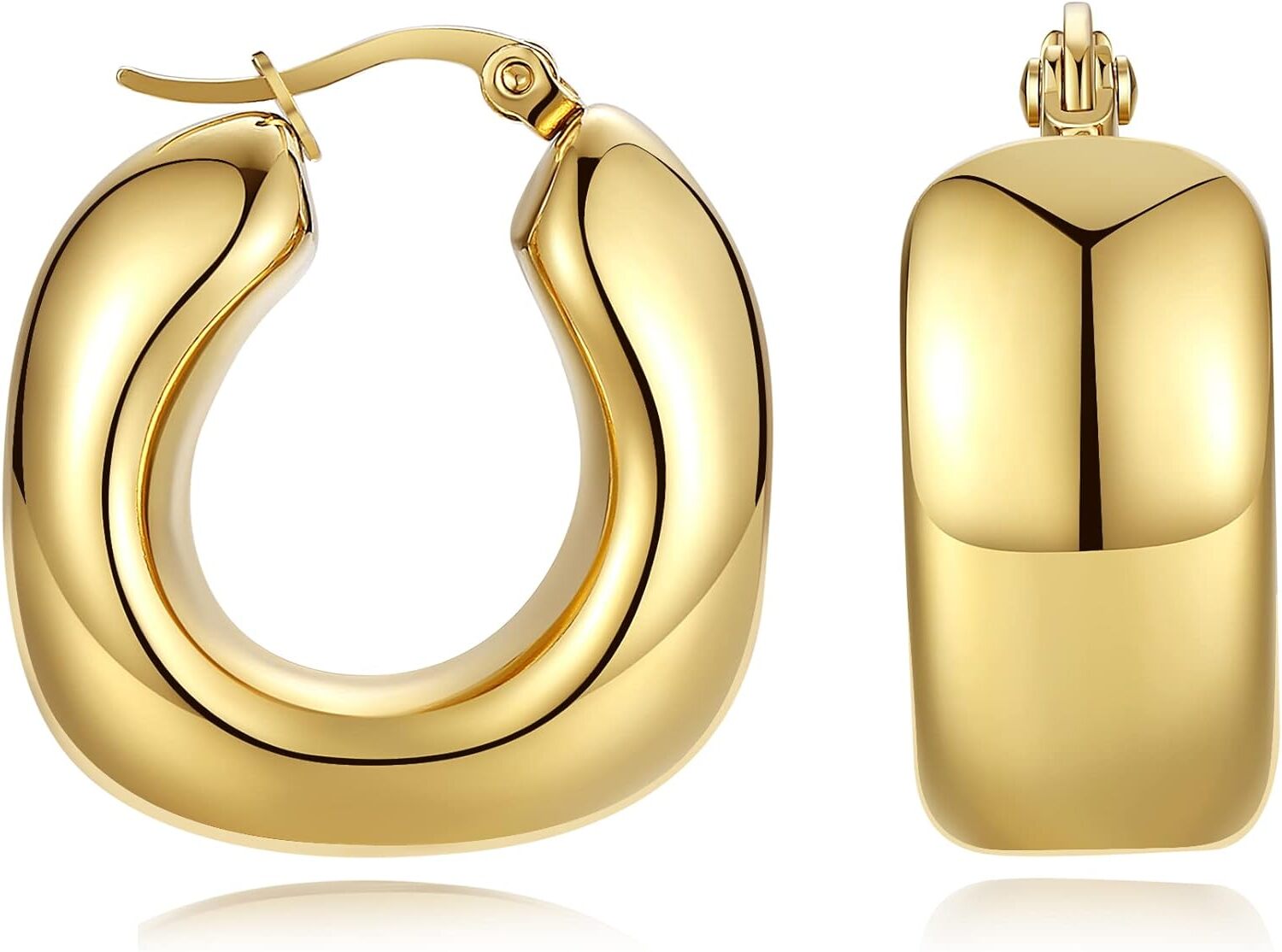
Chunky gold jewelry has surged in popularity, becoming a staple in fashion collections worldwide. Why has this trend taken hold, and what makes these bold pieces so sought after? At its core, chunky gold jewelry represents more than just an accessory; it's a statement of style, confidence, and a nod to vintage glamour with a modern twist. From thick chains to oversized rings, each piece carries its own story, blending artistry with personal expression. This trend isn't just about the allure of gold; it's about how these substantial pieces make us feel – empowered, bold, and unapologetically fashionable. In this post, we'll uncover 25 fascinating facts about chunky gold jewelry, revealing the history, craftsmanship, and unique appeal that keep it at the forefront of fashion.
What is Chunky Gold?
Chunky gold refers to large, irregularly shaped pieces of gold that are often found in their natural state. Unlike fine gold dust or small nuggets, chunky gold pieces are more substantial and can be quite valuable. Here are some fascinating facts about chunky gold.
-
Chunky gold nuggets are often found in riverbeds and streams. These locations are prime spots for gold panning and prospecting.
-
The largest gold nugget ever found weighed 72 kilograms. Discovered in Australia in 1869, it was named the "Welcome Stranger."
-
Gold is one of the heaviest metals. A cubic foot of gold weighs over 1,200 pounds.
Historical Significance of Chunky Gold
Throughout history, chunky gold has played a crucial role in economies and cultures. Its allure has led to numerous gold rushes and has been a symbol of wealth and power.
-
The California Gold Rush of 1849 was sparked by chunky gold discoveries. Thousands flocked to California in hopes of striking it rich.
-
Ancient Egyptians used chunky gold for jewelry and artifacts. Gold was considered the skin of the gods.
-
Gold coins were first minted in Lydia, an ancient kingdom in modern-day Turkey. These coins often contained chunky gold.
How Chunky Gold is Formed
Understanding how chunky gold forms can provide insights into where to find it. Gold forms in various geological settings, often requiring specific conditions.
-
Gold forms in quartz veins. These veins are created by hydrothermal fluids that deposit gold as they cool.
-
Erosion plays a significant role in creating chunky gold. Over time, weathering breaks down rocks, releasing gold into rivers and streams.
-
Volcanic activity can also produce gold deposits. Magma can carry gold, which solidifies as the magma cools.
Chunky Gold in Modern Times
Even today, chunky gold continues to captivate and hold significant value. Modern technology and methods have made gold prospecting more efficient.
-
Metal detectors are commonly used to find chunky gold. These devices can detect gold buried several feet underground.
-
Gold mining companies invest millions in exploration. They use advanced technology to locate and extract gold deposits.
-
Chunky gold is often sold at auctions. Collectors and investors are willing to pay a premium for large, unique pieces.
Interesting Facts About Chunky Gold
There are many lesser-known but intriguing aspects of chunky gold that make it even more fascinating.
-
Gold is virtually indestructible. It does not tarnish, rust, or corrode.
-
Gold is highly malleable. A single gram can be beaten into a sheet one square meter in size.
-
Gold is a good conductor of electricity. This makes it valuable in electronics.
-
Gold has been found on every continent. Even Antarctica has gold deposits.
-
Gold is often alloyed with other metals. This increases its strength and alters its color.
-
Gold is used in space technology. Its reflective properties protect spacecraft from radiation.
-
Gold can be found in seawater. However, extracting it is not yet cost-effective.
-
Gold has medicinal uses. It is used in some treatments for arthritis and other conditions.
-
Gold is a symbol of purity and value. It is often used in awards and medals.
-
Gold is used in art and decoration. Gold leaf is a popular material for gilding.
-
Gold mining can have environmental impacts. Responsible mining practices are essential to minimize damage.
-
Gold is often recycled. Old jewelry and electronics are sources of recycled gold.
-
Gold prices fluctuate based on market demand. Economic conditions, geopolitical events, and other factors influence gold's value.
A Final Glance at Chunky Gold Chains
Chunky gold chains have been more than just accessories; they're symbols of status, style, and cultural significance. From their roots in ancient civilizations to their prominence in modern fashion and hip-hop culture, these bold pieces have stood the test of time. They represent power, wealth, and a bold statement in personal style. Whether you're drawn to the allure of their shine or the depth of their history, there's no denying the impact they've had. As trends evolve, one thing remains clear: chunky gold chains continue to captivate and charm, proving they're here to stay. So, next time you spot one, remember, you're looking at centuries of history and style, all wrapped around someone's neck.
Was this page helpful?
Our commitment to delivering trustworthy and engaging content is at the heart of what we do. Each fact on our site is contributed by real users like you, bringing a wealth of diverse insights and information. To ensure the highest standards of accuracy and reliability, our dedicated editors meticulously review each submission. This process guarantees that the facts we share are not only fascinating but also credible. Trust in our commitment to quality and authenticity as you explore and learn with us.


